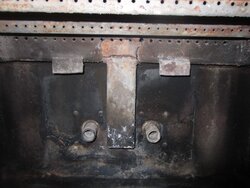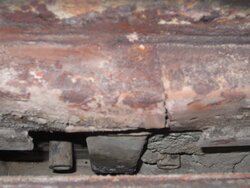Hello, good people! I hope you're all warm and cozy.
I am trying to find the best way to repair a stove crack, and am out of my depth. Online research has led me down the typical rabbit holes (from "sell it for scrap" to "don't sweat it!") so I'm hoping you folks can set me straight.
The stove is a 2003 H&H Quadra-Fire 3100 ACT which appears to be otherwise solid. The cracks (see photo) are right at the "T" part of the rear manifold. The stove is not currently in use and will not be until this is resolved -- along with new brick, etc..
To what degree will these cracks affect performance if left untreated?
Is it something that needs to be welded? Anyone have experience with cost to have that done?
What about using furnace cement? Refractory cement? I am uncertain of the difference in those products, but have seen both mentioned in repair discussions.
Any and all advice will be greatly appreciated!
Best regards,
SOH
I am trying to find the best way to repair a stove crack, and am out of my depth. Online research has led me down the typical rabbit holes (from "sell it for scrap" to "don't sweat it!") so I'm hoping you folks can set me straight.
The stove is a 2003 H&H Quadra-Fire 3100 ACT which appears to be otherwise solid. The cracks (see photo) are right at the "T" part of the rear manifold. The stove is not currently in use and will not be until this is resolved -- along with new brick, etc..
To what degree will these cracks affect performance if left untreated?
Is it something that needs to be welded? Anyone have experience with cost to have that done?
What about using furnace cement? Refractory cement? I am uncertain of the difference in those products, but have seen both mentioned in repair discussions.
Any and all advice will be greatly appreciated!
Best regards,
SOH



